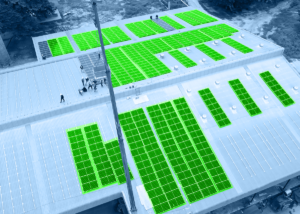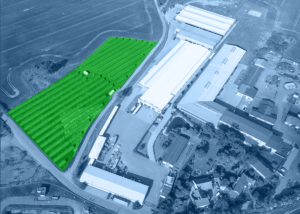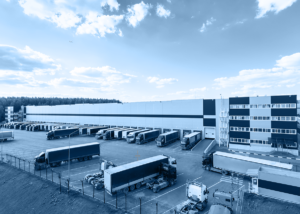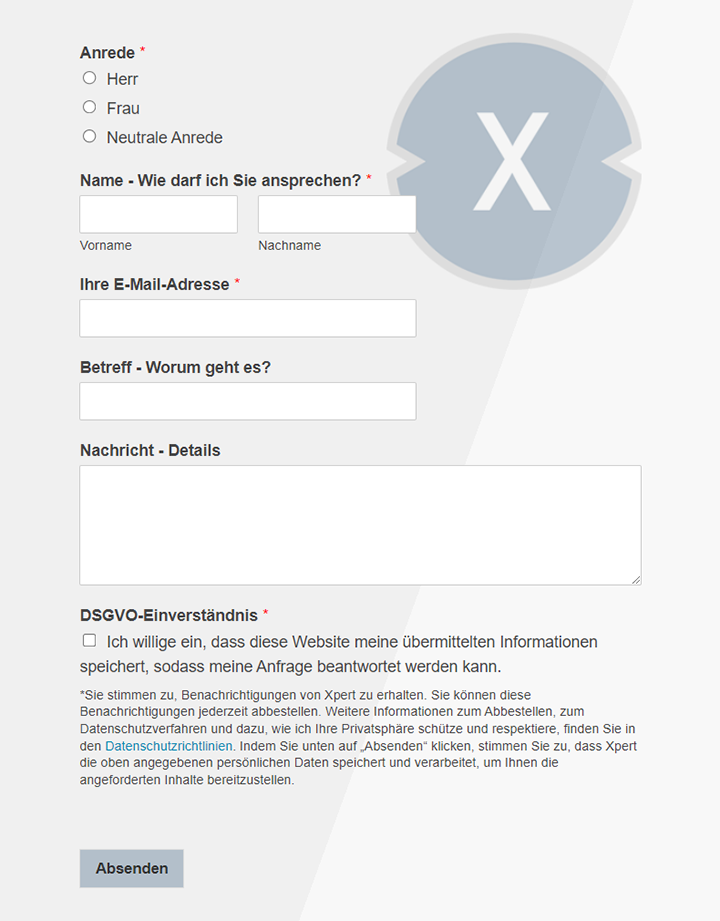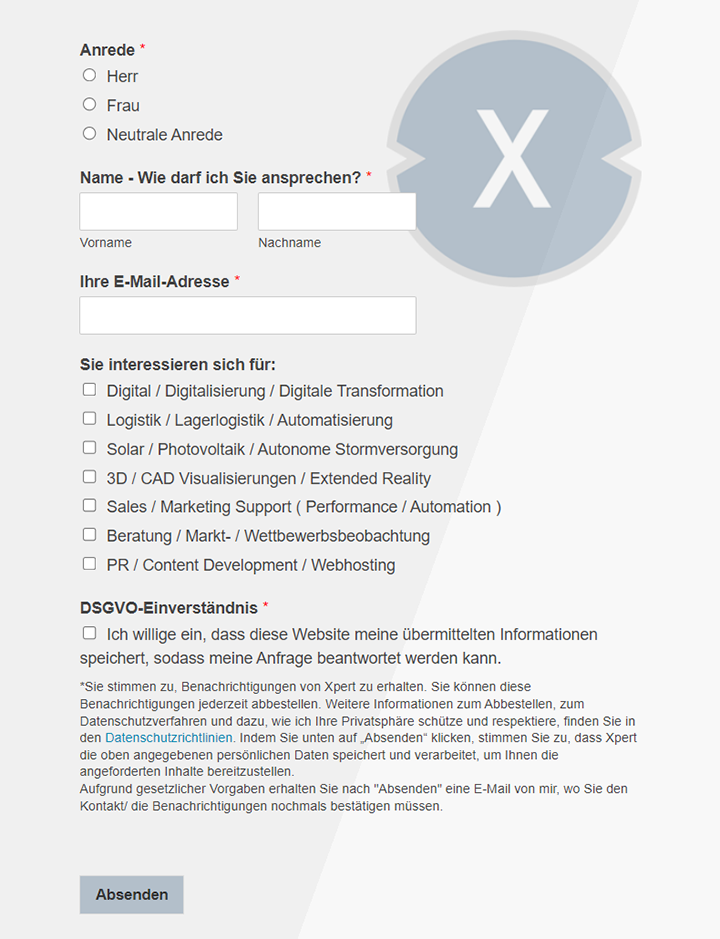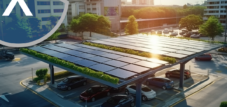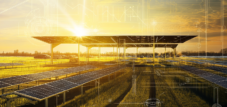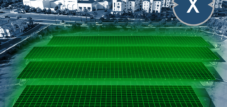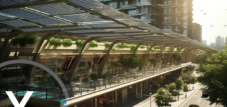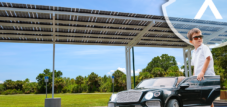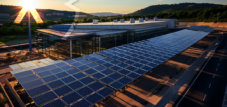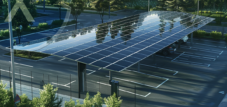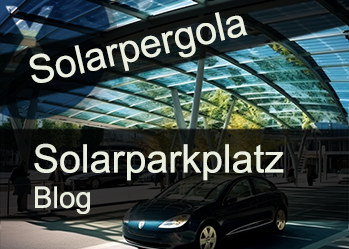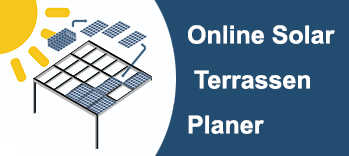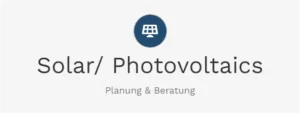16% growth! BIPV market explodes-solar parking spaces and solar carports as the key to success
Xpert pre-release
Language selection 📢
Published on: February 5, 2025 / update from: February 5, 2025 - Author: Konrad Wolfenstein

16% growth! BIPV market explodes-solar parking spaces and solar carports as the key to success-creative image: xpert.digital
Building-integrated photovoltaics: innovations in the growing BIPV market
The market for building integrated photovoltaics (BIPV) and the role of solar carports
The market for building integrated photovoltaics (BIPV) is experiencing a dynamic growth phase that is promoted through technological innovations and the worldwide demand for sustainable energy solutions. A particularly high-growth segment within this market is solar carport, which are increasingly spread by their multifunctional properties.
Market forecasts and growth
The global market size for BIPV is expected to reach $ 13.02 billion by 2028, with an annual growth rate (CAGR) of 16 % between 2021 and 2028. Several factors contribute to this increase:
- Solar carports as an integrative solution: You combine parking space covering with energy generation and can be used for both commercial and private purposes.
- Sustainable architecture: The demand for visually appealing solar systems for commercial and residential buildings is increasing, which enclosed new markets for BIPV.
- State funding programs: Subsidies and incentives in many countries accelerate market penetration.
Technological drivers
The technological development in the BIPV sector contributes significantly to the increase in performance and market acceptance. The most important innovations include:
- Bifacial modules: These increase the energy yield by up to 30 %by absorbing light from both the front and the back. This is particularly advantageous for solar carports that often have reflective surfaces such as asphalt or concrete.
- Intelligent energy storage: You optimize the use of surplus energy, ensure network stabilization and can serve as an emergency power supply.
- Half-transparent bipv glass: This technology enables daylight to use in buildings and at the same time generate energy, which is particularly attractive for facades and roof areas.
Regional priorities
- Europe: The region takes a pioneering role through strict climate goals and ambitious construction projects. One example is the BIPV factory of Solarstone, which produces 13,000 modules per month.
- Asia-Pacific: The region dominates the market, especially China, where urbanization and state support programs drive growth. Japan and South Korea are increasingly relying on network -independent energy solutions.
- North America: There are increasing investments in sustainable construction projects, especially in the United States, where states such as California have strict solar requirements.
Economic and ecological benefits
- Cost savings: BIPV systems replace traditional building materials and reduce construction and energy costs in the long term.
- CO₂ reduction: One example is a 6.2 MW solar carport from Tata Power, which saves around 7,000 tons of CO₂ annually.
- Increase in the real estate value: Sustainable buildings with integrated PV solutions are increasingly in demand and achieve higher market values.
Market leader and competition
- BIPV manufacturers: Companies such as Onyx Solar, Solarday and AGC Inc. drive innovations and rely on glass-glass modules and colored PV solutions.
- Solar carport specialists: Tesla, Solarstone and MITBet offer modular and certified systems that can be adapted flexibly.
- Automobile manufacturers: Some manufacturers such as Toyota and Hyundai research the integration of solar cells in vehicle body and sliding roofs.
1.82 billion until 2033: the rise of the solar parking lot market
The solar parking lot and solar carport market should grow to $ 1.82 billion by 2033 (CAGR 10.2 %), with the Asian-Pacific space continued to show the greatest potential. The combination of architecture and sustainable energy will increasingly influence the urban infrastructure.
The influence of glass-glass-perc bipv modules on the market
Technological advances
Glass-glass-perc-bipv modules are an example of the innovative strength of the market. These modules offer several advantages:
- Increased efficiency: One example is the PERC BIPV module from Solarday with an efficiency of 17.98 %, which combines monocrystalline cells with glass-glass technology.
- Better temperature stability: thanks to a temperature coefficient of -0.39 %/ ° C, the power remains stable even at high temperatures.
Design and integration
- Color variants: modules are available in different colors (e.g. red, green, gold, gray), which enables architectural diversity.
- Half -transparent systems: These offer a harmonious combination of natural lighting and electricity generation.
Effects on market dynamics
Dünstlicht-BipV (Building Integrated Photovoltaics) has a significant impact on market dynamics. The material cost reduction by 20–30 % lowers the manufacturing costs and makes this technology more economically attractive, while the flexible application options promote use in various new industries such as the automotive industry, commercial facades and luxury properties. At the same time, the Asia-Pacific region is driving the global expansion with a market share of 50 %, supported by strong urbanization trends and ambitious environmental goals. These factors together create a strong basis for sustainable market growth and competitive advantages in the construction and energy industry.
Environmental and economic factors
- CO₂ savings: Glass glass modules save 7.5–12.5 % more CO₂ than conventional glass film modules.
- Additional functions: In addition to electricity generation, you also offer thermal insulation and sound insulation (up to 40 dB for sunovation modules).
Corporate initiatives
- Tesla: Developed solar roof tiles that combine aesthetics and energy self-sufficiency.
- AGC Inc.: Developed BIPV glass for the Punggol Campus in Singapore, which is supposed to cover 30 % of the energy requirement.
The future of building: BIPV technologies are driving the solar construction turnaround
The combination of performance, design flexibility and sustainability makes BIPV technologies an essential part of the solar construction turnaround. In the coming years, the market will continue to expand through innovations in material technology, new areas of application and the increasing demand for climate -friendly solutions.
Our recommendation: 🌍 Limitless reach 🔗 Networked 🌐 Multilingual 💪 Strong sales: 💡 Authentic with strategy 🚀 Innovation meets 🧠 Intuition
At a time when a company's digital presence determines its success, the challenge is how to make this presence authentic, individual and far-reaching. Xpert.Digital offers an innovative solution that positions itself as an intersection between an industry hub, a blog and a brand ambassador. It combines the advantages of communication and sales channels in a single platform and enables publication in 18 different languages. The cooperation with partner portals and the possibility of publishing articles on Google News and a press distribution list with around 8,000 journalists and readers maximize the reach and visibility of the content. This represents an essential factor in external sales & marketing (SMarketing).
More about it here:
Innovation meets sustainability: The boom of the building -integrated photovoltaic - background analysis
Solar energy and architecture: the transformative power - the transformative force
The market for building integrated photovoltaics (BIPV) is located in a remarkable phase of the upswing, fueled by a cocktail of groundbreaking technologies and the unstoppable global urge for sustainable energy and building solutions. Within this dynamic sector, solar carports take up a key role that goes far beyond its primary function as protective parking space roofs.
Market dynamics and growth perspectives
Analysts forecast an impressive volume of $ 13.02 billion for the global BIPV market by 2028. This corresponds to an average annual growth rate (CAGR) of around 16 % over the period from 2021 to 2028. Several factors contribute to this rapid growth:
Solar carports as a multifunctional infrastructure
They are no longer just simple roofing. Solar carports offer an intelligent combination of protection for vehicles from weather influences and the possibility of creating clean energy at the same time. This double function makes you an attractive option for companies, municipalities and private individuals.
Aesthetics and integration
The increasing demand for solar systems that fit seamlessly into the architecture of commercial and residential buildings is an essential growth driver. BIPV offers solutions that are both functionally and visually appealing.
Technological progress as catalysts
A number of technological innovations are driving the development of the BIPV market and opens up new possibilities:
Bifacial modules
These modules, which can absorb light from both sides, are a gamuchanger. You can increase the energy efficiency of solar carports by up to 30 %. The ability to use diffuse light and reflections from the ground makes them particularly efficient in surroundings with high albedo.
Intelligent energy storage solutions
The integration of battery storage into BIPV systems enables excess energy to store and return if necessary. This increases network stability and offers reliable emergency power supply for power failures. Modern storage solutions optimize your own consumption and reduce dependence on the public network.
Half-transparent bipv glass
This innovative material combines the advantages of energy generation with the possibility of leaving natural light in buildings. It is ideal for facades, windows and skylights and creates bright, energy -efficient interiors. Half-transparent BIPV elements enable architects and designers to design buildings that are both aesthetically appealing and sustainable.
Regional differences and focus
BIPV market development varies depending on the region, with different factors influencing growth in the respective areas:
Europe as a pioneer
Europe plays a leading role, driven by ambitious climate goals, strict building regulations and the commitment to renewable energies. Initiatives such as the BIPV factory of Solarstone, which produces impressive 13,000 modules per month, underline Europe's commitment to BIPV. Funding programs and incentives from the European Union and the individual member states contribute to growth.
Asia-Pacific as a growth engine
The Asia-Pacific region dominates the BIPV market, with China playing a key role. The rapid urbanization, combined with government support programs and investments in renewable energies, is driving growth in this region. Japan, South Korea and India are also important markets with growing interest in BIPV solutions.
Economic and ecological benefits
BIPV systems offer a variety of economic and ecological advantages:
Cost savings
BIPV systems can replace conventional building materials and thus reduce construction costs. In addition, you reduce the energy costs by generating clean electricity on site. The long -term cost savings can be significant, especially for commercial buildings with high energy consumption.
CO₂ reduction
The installation of BIPV systems contributes significantly to the reduction of greenhouse gas emissions. An impressive example is a 6.2 MW solar carport from Tata Power, which saves an estimated 7,000 tons of CO₂ annually. BIPV systems make an important contribution to combating climate change and the achievement of sustainability goals.
Important actors and innovation drivers
A number of companies play a crucial role in the further development of the BIPV market:
BIPV manufacturer
Companies such as Onyx Solar, Solarday and AGC Inc. are driving innovations in various areas, including glass glass modules, colored PV solutions and flexible BIPV systems. They are constantly developing new products and technologies to improve the performance, aesthetics and areas of application from BIPV.
Solar carport specialists
Companies such as Tesla, Solarstone and MiBet offer modular and expandable solar carport systems that often have DIBT certification (German Institute for Building Technology). These certifications ensure the quality and safety of the products and facilitate the approval processes.
Future prospects and trends
The future of the BIPV market looks promising:
Growth potential for solar carports
Forecasts indicate that the solar carport market will achieve a volume of $ 1.82 billion by 2033, which corresponds to an average annual growth rate of 10.2 %. The Asian-Pacific space is likely to continue to have the greatest growth potential.
Integrated energy solutions
The integration of BIPV into buildings is becoming increasingly sophisticated, with architecture and sustainability going hand in hand. Integrated energy solutions that combine BIPV, energy storage and intelligent control systems will significantly shape the transformation of urban infrastructures.
The importance of innovative products: glass-glass-perc-bipv modules
Innovative products such as the glass-glass-perc-bipv module (passivated emitter and real cell) are a crucial factor for market development. These modules act as accelerated because they tackle technological, aesthetic and economic challenges at the same time.
Technological progress in detail
Increase in efficiency: The efficiency is a decisive factor in the economy of solar modules. The PERC BIPV module from Solarday, for example, reaches an efficiency of 17.98 %. The combination of monocrystalline cells with glass glass technology leads to a greater durability and a lower degradation over the lifespan of the module. Glass glass modules are more resistant to environmental influences such as moisture and UV radiation, which extends their lifespan.
Temperature stability
Solar modules tend to lose performance at high temperatures. The temperature coefficient indicates how strongly the performance of a module decreases with increasing temperature. A low temperature coefficient is therefore desirable. PERC BIPV modules typically have a temperature coefficient of around -0.39 %/° C. This means that the loss of performance is minimized in heat, which is a decisive advantage for use in sunny regions.
Aesthetic integration and design flexibility
Color variants
BIPV modules are available in different colors, including red, green, gold and gray. This variety of colors enables architecturally appealing solutions that fit seamlessly in facades or roofs. Architects and designers can use BIPV modules to design buildings that are both energy-efficient and aesthetically appealing.
Semi -transparent systems
Half-transparent BIPV systems make it possible to leave natural light in buildings and at the same time produce electricity. These systems are ideal for curtain facades and skylights. They create bright and friendly interiors and at the same time reduce the need for artificial lighting.
Market dynamics through innovations
The introduction of glass-glass perc bipv modules and other innovations has a significant impact on market dynamics:
Influence influence
- Cost reduction thin-layer BIPV technologies reduce material costs by 20–30 % and enable more flexible integration. This makes BIPV systems accessible for a wider range of applications.
- Diversity of application BIPV is used in a variety of areas, including car roofs, sliding roofs in the automotive sector and commercial curtain facades. This diversity contributes to market penetration.
- Regional expansion The Asian-Pacific room dominates the market with a share of 50 %, driven by Chinese urbanization and the Japanese CO₂ goals.
Environmental and economic factors in detail
- CO₂ reduction: Glass glass modules save 7.5–12.5 % more CO₂ than conventional glass film systems over your life cycle. This is due to the longer lifespan and the lower degradation of glass-glass modules.
- Multiple benefits: BIPV systems offer a combination of electricity generation, thermal insulation and sound insulation. For example, Sunovation modules achieve sound insulation of up to 40 dB. The combination of these functions makes BIPV systems an attractive option for energy-efficient construction.
Corporate initiatives and pioneers
- Tesla: Tesla has integrated solar cells in roof tiles to combine aesthetics and energy self -sufficiency. These solar bricks are an elegant alternative to conventional solar modules and offer seamless integration into the roof design.
- AGC Inc.: AGC Inc. developed BIPV glass for the Punggol campus in Singapore, which was opened in 2024. The BIPV system is to cover 30 % of the campus' energy requirement. This is an example of how BIPV systems can be integrated into modern buildings on a large scale.
Buildings as energy power plants: the revolution of the building and energy world
The combination of performance, design flexibility and sustainability positions glass and glass BIPV modules as a key technology for the solar construction turn. These innovations drive the market diversification forward, from commercial sector (with a market share of 60 %) to niche markets such as luxury properties and monument protection. At the same time, reduce the total costs of Net Zero Energy Buildings by up to 15 % by reducing conventional building materials.
BIPV is more than just a technology; It is a paradigm shift in the way we design, build and use buildings. It is a step towards a future in which buildings not only consume energy, but also actively contribute to the energy transition. The continuous further development of BIPV technologies and the increasing acceptance by architects, builders and end consumers will help to ensure that BIPV plays an increasingly important role in the design of our built environment. The vision is a future in which every building is a power plant that generates clean energy and at the same time makes a contribution to reducing greenhouse gas emissions.
- Warehouses, production halls and industrial halls with their own power source from a photovoltaic roof system - Image: NavinTar|Shutterstock.com
- Industrial plant with its own power source from an outdoor photovoltaic system - Image: Peteri|Shutterstock.com
- Plan solar systems with photovoltaic solutions for freight forwarding and contract logistics
- B2B solar systems and photovoltaic solutions & advice
- Plan photovoltaics for warehouses, commercial halls and industrial halls
- Industrial plant: Plan a photovoltaic open-air system or open-space system
- Plan solar systems with photovoltaic solutions for freight forwarding and contract logistics
- B2B solar systems and photovoltaic solutions & advice
We are there for you - advice - planning - implementation - project management
☑️ Construction and advice on photovoltaic open-space systems
☑️ Solar park planning ☑️ Agri-photovoltaic implementation
☑️ Solar outdoor systems with dual-use solutions
Xpert.Solar is your ideal partner for the planning, consulting and construction implementation of ground-mounted photovoltaic systems and agricultural photovoltaic projects due to our many years of experience and expertise in the solar energy industry. Xpert.Solar has an experienced team of professionals that offers tailored solutions to farmers and investors. From location analysis to financial and legal advice to technical implementation and monitoring, Xpert.Solar supports its customers professionally and reliably to ensure successful and sustainable implementation.
I would be happy to serve as your personal advisor.
You can contact me by filling out the contact form below or simply call me on +49 89 89 674 804 (Munich) .
I'm looking forward to our joint project.
Xpert.Digital - Konrad Wolfenstein
Xpert.Digital is a hub for industry with a focus on digitalization, mechanical engineering, logistics/intralogistics and photovoltaics.
With our 360° business development solution, we support well-known companies from new business to after sales.
Market intelligence, smarketing, marketing automation, content development, PR, mail campaigns, personalized social media and lead nurturing are part of our digital tools.
You can find out more at: www.xpert.digital - www.xpert.solar - www.xpert.plus




